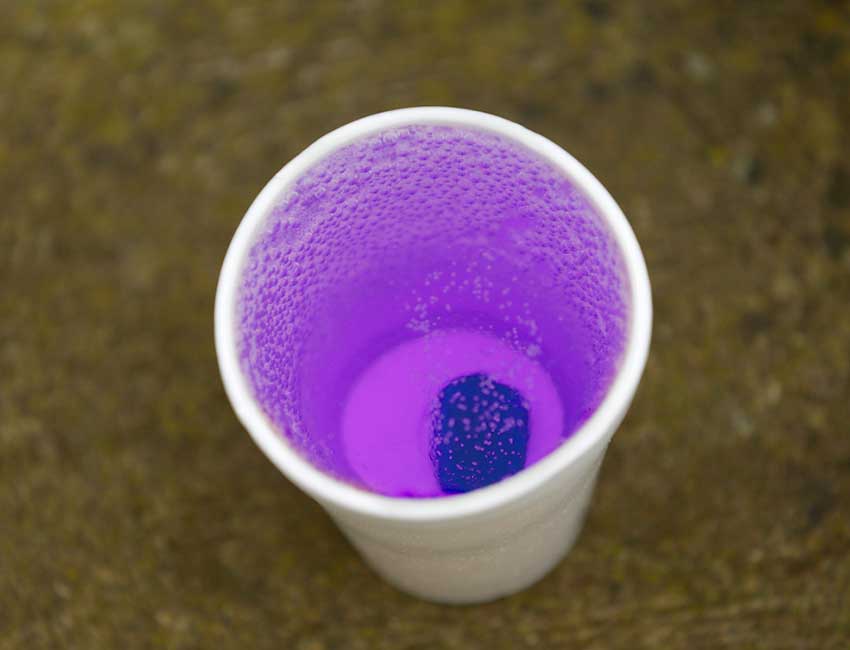What is in lean?
Lean, often referred to as Purple Drank or Sizzurp, originated in the 1960s music scene as a blend of cough syrup and alcohol. Today, it includes prescription-strength cough syrups mixed with soda and candy, producing a sweet yet highly potent drink. The National Institute on Drug Abuse warns that this mix can lead to serious health risks due to its strong sedative effects, especially when taken in large doses.
What is in Lean the drug?
Lean drug contains prescription-strength cough syrups with codeine and promethazine, combined with flavored soda. Some versions use dextromethorphan-based over-the-counter syrups. According to a study from the NIH, these ingredients pose a significant overdose risk when combined, as the sugary flavor masks its potency, potentially leading to accidental overdose.
| Ingredient | Description | Common Side Effects |
|---|---|---|
| Promethazine | Antihistamine for allergies, insomnia, and nausea. | Drowsiness, blurred vision, constipation. |
| Codeine | Opioid for pain relief and cough suppression. | Drowsiness, addiction risk, constipation. |
| Dextromethorphan | OTC cough suppressant. | Dizziness, nausea, hallucinations (high doses). |
Lean’s Effects on the Body
Lean’s effects on the body are multi-layered due to the combined influence of codeine and promethazine. According to a recent study in the Journal of Substance Abuse Treatment, codeine can create an initial calming sensation, but prolonged use results in changes in brain chemistry. These changes often lead to both respiratory issues and cognitive decline over time. Recognizing these effects can be critical in identifying early signs of dependency.
Lean consumption has both immediate and gradual health consequences, each presenting distinct challenges. Short-term use is linked to effects like nausea and slowed reflexes, while long-term use increases risks like liver damage and cognitive impairment. According to a recent study by the American Medical Association, long-term codeine use can cause irreversible organ damage and psychological impact, underscoring the importance of early intervention.
How Does Lean Make You Feel?
When consumed, Lean produces a euphoric, relaxed sensation. However, it often results in heavy sedation, causing slowed motor function and disorientation. Promethazine, in particular, leads to respiratory depression, and combining it with alcohol or marijuana can escalate these risks, according to studies by the NIDA.
Is Lean Addictive?
Lean is highly addictive due to the codeine content. The DEA categorizes codeine as a Schedule II controlled substance, meaning it has a high potential for abuse. Users often develop tolerance, requiring higher doses to achieve the same effects, which can rapidly lead to dependency and heightened overdose risk.
Short- and Long-Term Health Effects of Lean
Short-Term Effects
- Weight gain
- Constipation
- Dizziness
- Slowed heart rate
Long-Term Effects
- Tooth decay
- Liver damage
- Brain lesions
- Epilepsy
Lean Drink Withdrawal
Does Lean Have Withdrawal Symptoms?
Regular lean use can lead to tolerance, meaning higher doses are needed for the same effect. Withdrawal from lean includes irritability, nausea, and muscle aches. A NIH study emphasizes the importance of professional help during withdrawal due to the severity of symptoms.
Symptoms of Lean Withdrawal
- Irritability
- Nausea and vomiting
- Loss of appetite
- Body pain
Lean with Weed
Mixing Lean with marijuana, also known as “purple weed” or “lean and green,” combines the sedative effects of both substances, leading to severe respiratory issues and cognitive impairment. According to NIDA research, combining these substances significantly elevates health risks and heightens the potential for addiction.
Seeking Help for Lean Abuse
If you or someone you know is struggling with lean abuse, seeking professional help is essential. Detoxification under medical supervision is the first step to recovery, ensuring that withdrawal symptoms are managed safely. Contact Still Detox for guidance and support.
FAQs
Does Lean Show Up on a Drug Test?
Yes, Lean shows up on drug tests. Codeine can be detected in urine for up to 48 hours, with detection windows varying based on dosage and metabolism.
How Long Does Lean Stay in Your System?
Lean can stay in the system for hours after use, with codeine detectable in hair up to 90 days, and in urine for 48 hours, as per JAMA findings.
When Do You Need Detox from Lean?
Detox becomes necessary once dependency is apparent. Consulting healthcare professionals for a supervised detox is vital due to the challenging withdrawal symptoms.
Is THC Syrup an Alternative to Lean?
THC syrup is marketed as an alternative to Lean, avoiding codeine but carrying risks like cognitive impairment with heavy usage. Studies suggest that while THC may be less physically harmful, its addiction potential remains high.








